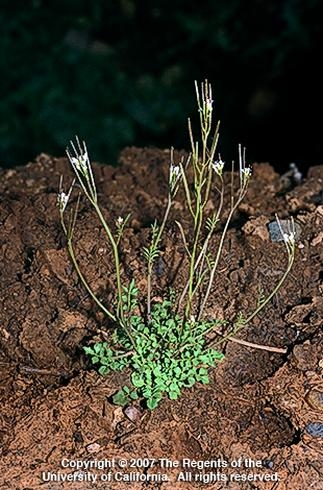
In the past, I have inadvertently uprooted a desired plant. With a quickly drawn breath, I immediately replant it, only to have it usually die anyway. A weed, on the other hand, will almost always replant itself if I leave it on top of the soil with any root system remaining at all. More often than not, it revives itself and continues on as if nothing had happened.
It is the time of year when weeds begin to prevail. Although honestly, I find that weeds are opportunistic in any season. I spend many days puttering around my garden, hoe in hand, uprooting and removing weeds.
I actually do not begrudge the effort as any time spent outdoors, for me, is a plus. What I do resent is the time spent removing weeds rather than in more pleasant garden pursuits. The proliferation of weeds and their seeming ability to grow by the hour is at times daunting. If you do not destroy them as small seedlings they will mature within days and distribute their seeds with abandon.
One of the weeds prevalent in our area is bittercress, also known as hairy bittercress, less-seeded bittercress or, more aptly, as popweed. It is a particular nemesis of mine. Bittercress is extremely prolific and will mature in only six weeks.
What intrigues and frustrates me about bittercress is its seed distribution system. These weeds are well camouflaged in my garden, and if I do not find them before they scatter their seed, the battle is lost.
You can easily kill them by pinching them or by disturbing the root system. But if you allow bittercress to mature and then try to pull it up, you will be rewarded with a mouthful or face full of seeds. The plant can literally shoot seeds for yards in all directions. Given that each plant can produce hundreds of sticky seeds, you have reproduction heaven.
Bittercress are the bane of wholesale nurseries as the seeds travel so far and travel on pots, in the water and in the soil. It's a good practice to remove the top half-inch of soil from any nursery plant before introducing it into your garden.
The key to weed removal is to get it when it is small. But getting down on my hands and knees is becoming harder as I get older. So I look for ways to avoid that effort. Often just scuffing the seedlings with my foot works well. It may look like I'm doing a soft-shoe routine, but it is effective.
Recently I purchased a long-handled tool with a stirrup-shaped blade. The stirrup shape allows me to get under the plant and uproot it without disturbing the soil much. However, many weeds will re-root unless I banish them completely, so I carry a bucket with me and deposit the weeds there. This method does require some bending but that's preferable to getting on my knees. For the cracks in the driveway (there are more post-earthquake), I use a sharp stick. The stick works great on the straight lines but requires a little finessing in the acute corners.
Weed killers abound at hardware stores and nurseries. Glyphosate, sold under several brand names, has been used to kill weeds since its registration in 1974. It readily kills emerging weeds without affecting the soil or leaving a residue. Always read and follow herbicide instructions.
I have found glyphosate effective in my yard's gravel areas, where weed removal is a problem. It has worked well except during winter, when it seems to take forever for the plant to dry up. The sprayed weeds do eventually die, but they remain upright and yellow for quite awhile and are as unsightly as the healthy weeds. I have not found a better method for killing weeds in gravel areas other than getting down on my knees and pulling them out by hand.
For more information on weed eradication, consult the Napa County Master Gardener web site (address below).
Workshop: Napa County Master Gardeners will hold a workshop on “Propagation and Seed Starting” on Sunday, March 1, from 2 p.m. to 4 p.m., at Yountville Community Center in Yountville.Master Gardeners will discuss and demonstrate several types of propagation methods, including division, soft wood cuttings, grafting and seed starting. Learn about the tools and techniques that lead to successful propagation and have a hands-on experience. To register, contact the Parks and Recreation Department at 707-944-8712 or visit its web site.
Master Gardeners are volunteers who help the University of California reach the gardening public with home gardening information. Napa County Master Gardeners ( http://ucanr.org/ucmgnapa/) are available to answer gardening questions in person or by phone, Monday, Wednesday and Friday, 9 a.m. to Noon, at the U. C. Cooperative Extension office, 1710 Soscol Avenue, Suite 4, Napa, 707-253-4143, or from outside City of Napa toll-free at 877-279-3065. Or e-mail your garden questions by following the guidelines on our web site. Click on Napa, then on Have Garden Questions? Find us on Facebook under UC Master Gardeners of Napa County.